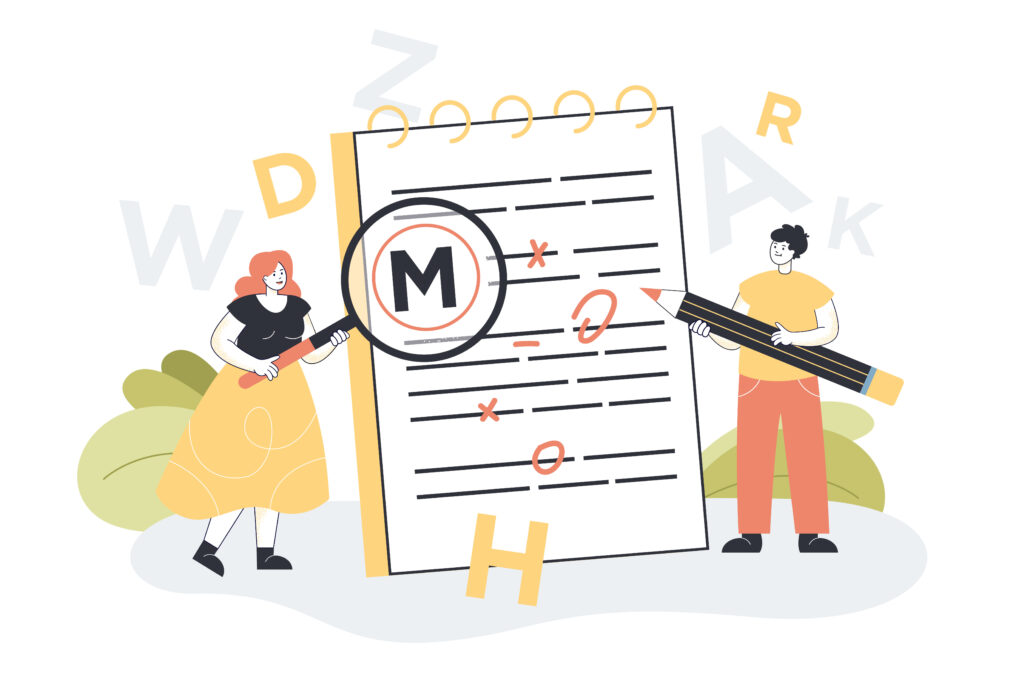A manuscript has to go through different editorial stages to be ready for publishing—copy editing, Line editing, and proofreading. However, new authors and self-publishers need to identify which type of editing their write-up needs. Although these stages are part of literary quality control, they all work differently.
Copy editing, line editing, and proofreading are terms used interchangeably but are different processes. Line editing focuses on improving the writing style, whereas copy editing focuses on writing mechanics. On the other hand, proofreading compares the galley proofs with standard written text rules. If you are a writer feeling lost with these editorial terms, this blog is exactly what you need.
It will walk you through the differences and descriptions of line editing, copy editing, and proofreading.
What is Line Editing?

Line editing helps you communicate your story to the reader efficiently. It involves scrutinizing the entire manuscript. Every chapter, section, paragraph, sentence, and word is checked for run-on and wordy sentences, paragraphs, and subheadings. It helps correct and track the text’s creativity, style, and language. Line editing does not require an editor to comb for errors. Rather, it focuses on controlling contextual ambiguity and the writing style to convey a story or information.
A line editor is responsible for making a book enjoyable. It involves toning the sentences to maintain fluidity, a sense of emotions, and the overall book’s feel. This editorial stage ensures that a book conveys a clear message using broad generalizations and cliches.
In line editing, editors do extensive fact-checking with the author. They will point out if a plot needs to be clarified. For example, a story set in the Victorian era involving an iPhone is not logically possible. They can also suggest removing, adding, or improving text to sound better. For example, using a marginal note to explain why there’s a need to replace a dull and bleak introduction.
Making inquiries to the author about the context of a paragraph. For example, why must a character wear a red muffler even in summer? Or what are the author’s intentions with the side character’s development?
Line editing also revolves around improving a story without completely rewriting it. Remove duplicates, clunky wordings, and awkward sentences. Break up long sentences into smaller parts. Or substituting weak and common words with strong counterparts.
What is Copy Editing?

Copy editing emphasizes relaying a grammatically correct, consistent, and coherent narrative. A copy editor has to deal with the technical aspects of the language. For example, checking a passage or book’s punctuation, syntax, and grammar. Copy editors avoid correcting the writing style. Rather, they focus on making the write-up professional and correct.
A copy editor will fact-check a paper or a book for dates, names, and numbers. If some calculations are involved, they will recalculate it to confirm the results. They will also ensure that a manuscript conforms to the publication’s standard. Trimming the text to fit a designated space on the print paper or removing unnecessary words to maintain clear and precise prose.
Copy editors make your manuscript easy to read by paraphrasing convoluted quotes and eliminating jargon. The last line of defense ensures only high-quality narrative reaches a reader. They are also responsible for producing or rephrasing unique and engaging display text. For example, the sub-headings, summaries, and captions stand apart from the text.
What is Proofreading?

The fast-paced publishing process is an excellent way to expand a business. However, it could lead to unidentified errors in the prose. Therefore, proofreading is a mandatory step to conclude the pre-publishing process. Unlike the editorial processes that implement larger changes to a text, proofreading involves only minor alterations for refinement. Proofreading is done after you get a final edited draft. Proofreaders look for misplaced punctuations: hyphens, commas, apostrophes, and dashes. They will highlight incorrect articles, prepositions, and conflated homophones.
Many new authors and self-publishers look for proofreaders for hire to tweak their text to perfection. They can proofread novels, Ph.D. dissertations, and even promotional flyers to comply with the rules and regulations of the particular genre of the text.
Proofreading vs. Copy Editing vs. Line Editing: What Is the Difference?
Many authors and readers need clarification on these editorial concepts. Line editing deals with making the text more subjective and interpretive. It involves making it more dramatic while preserving the original writing style. Meanwhile, copy editing is more mechanical and clarifies the text in objective and subjective terms. In contrast, proofreading comes after these steps. It does not change the former terms dramatically but involves correcting grammar, typos, and punctuation. If you are a budding author looking for editors and proofreaders for hire, AMZ Publishing is the perfect place to contact.

